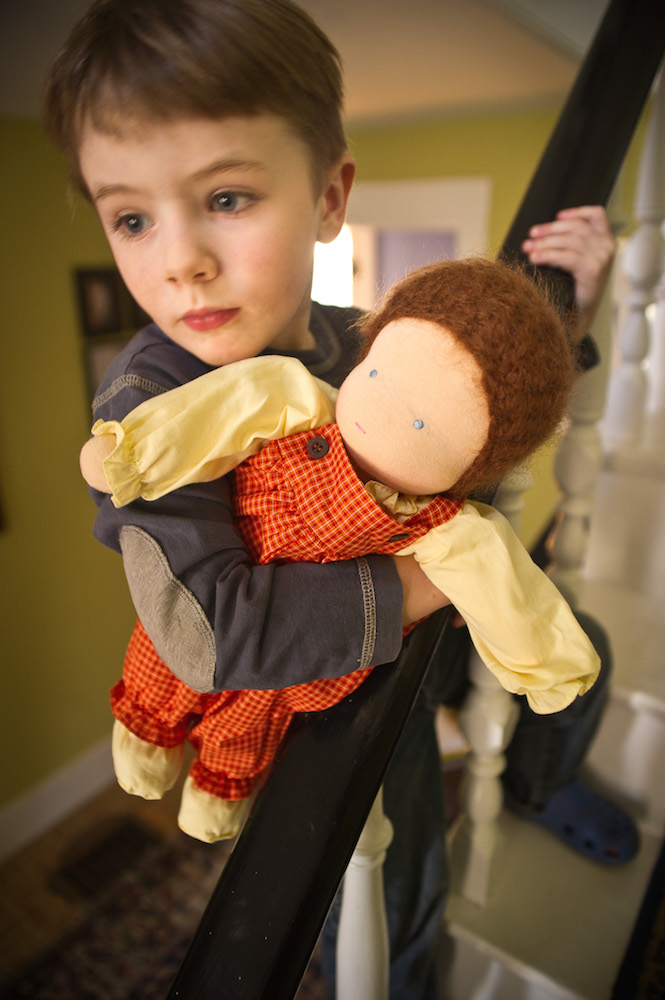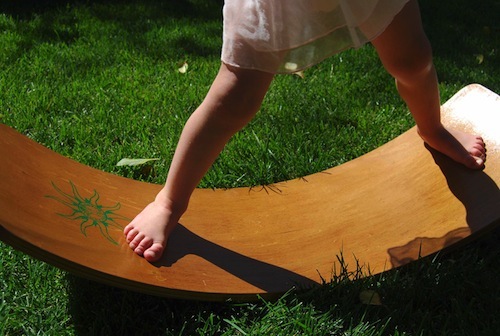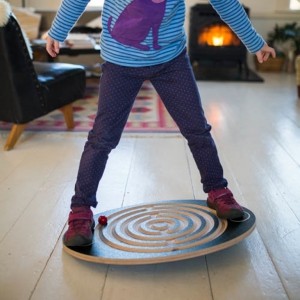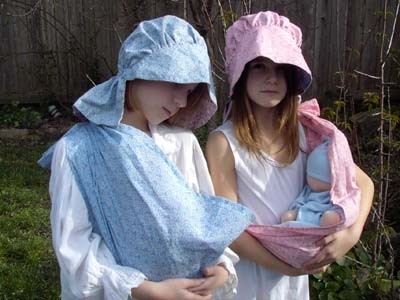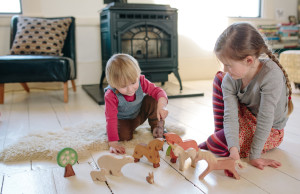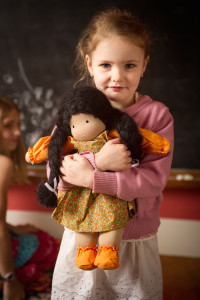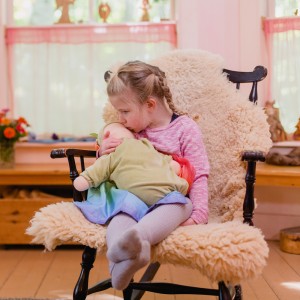KYLA B. WROTE TO ASK:
I am a single mother to a nearly 15-month-old little boy. I was wondering if you might be able to give me with some information on boys playing with dolls. I was hoping you could address the benefits of boys playing with dolls. I have had some disapproving comments and looks from other parents when I try and discuss this with them.
People are concerned that my son has too much of a female influence in his life, as my son has no father and we live with my parents, but my father is a wonderful role model for my son and they have a very close bond.
People are also under the impression that boys play with trucks and girls with dolls. But I think all toys are for everybody. I thought dolls would help teach my son compassion, caring and even the beginnings of responsibility.
Please help me, Sarah. I’m feeling a little confused as to how to incorporate dolls into my son’s daily play and also how to respond to the critics. Am I best to purchase a weighted doll as my son’s first doll and put his current doll away for later? Or is he not ready yet for dolls?
SARAH RESPONDS:
There is a fear among many men that playing with dolls will make boys less masculine. Sadly, there are some women who also share this belief.
We’ve been conditioned for so many decades to think that boys play with trucks and cars and girls play with dolls and too many boys have been told that playing with dolls is for “sissies.”
This thinking needs to be changed.
Giving a boy a doll gives him the opportunity to explore his nurturing and caring side, and can teach a boy as much about being a father, just as dolls teach girls about motherhood.
Children imitate the adults around them in their play. When mothers and fathers model nurturing, caring behavior, boys and girls will imitate this in their doll play and this is healthy! It teaches children about relationships and empathy.
If a boy spends his days at home with his mother (whether she is a single parent or not) he will want to imitate her activities. This is normal.
This is natural. This is good. He is practicing parenting.
Times have changed. Today’s fathers tend to me much more involved in child-rearing than they were decades ago. It is not uncommon anymore to see a dad with a baby in a sling, or pushing a stroller.
Since children are imitative, it is natural for them to want to carry a dolly in a sling or push one in toy carriage.
And it’s curious how culturally it seems more acceptable to allow a girl to play with traditional “boy toys.” Most people don’t think twice watching a girl playing with building sets, Legos, or toy cars. In fact, many parents are now encouraging their daughters to play with these so called “STEM toys” and teaching their daughters that they can grow up to be a mother and have a career.
So why do so many adults seem alarmed when they see little boys playing with dolls or “playing house” and pretending to cook in a play kitchen? Don’t we want our sons to grow up to caring fathers and capable of cooking a meal?
We need to change our way of thinking and educate others that doll play is important if we want boys to grow up to be nurturing, caring fathers. It doesn’t make them any less masculine.
I believe that all parents of boys should give their son a doll to love. I recommend giving a boy his first doll between 18-months and three-years-old, before he has gotten the memo that boys don’t play with dolls. A one-year-old will probably have little interest in a doll other than to explore it with his senses as he would any other object.
But at 18-24 months he may start snuggling with and be comforted by a favorite soft doll. But it is around age 4-5 when children really begin imitative pretend play with dolls.
It can also be very helpful to give a boy a doll when a new younger sibling is on the way, and can help prepare your child emotionally for the new arrival. Our Heavy Baby Dolls (with their weight that makes them feel like a real baby) are wonderful for this purpose!
What if you give your son a doll and he shows no interest in it? I get this question a lot. I would advise you not to worry. Not all children are going to respond to all toys the same way. If he is too young for it, keep it around and he may show interest in it later.
Some boys become very attached to a special doll, other boys show little interest. Children are unique, just as adults are. There is no one-size-fits-all toy.
The important thing is to give provide your son with a doll and give him the opportunity to develop his nurturing and caring side through play. But remember that there are many ways that children learn to become nurturing and caring adults – the primary way is by being cared for by nurturing parents.
Finally, I’ll leave you with one of my favorite memories as an early childhood teacher as I observed the children in my class during free play. I will never forget the day when Wilson, a little boy in my class who was always full energy and joy, was pretending to nurse a dolly that was tucked under his sweater. He held the baby securely with one arm while he brandished a wooden sword in the other, engaged in a lively sword fight with another boy.
Wilson is a wonderful reminder that boys can play with dolls and be no less of a boy!
Are you the mother of a boy? Have you given your son a doll? Does he play with it? Please share your comments!

